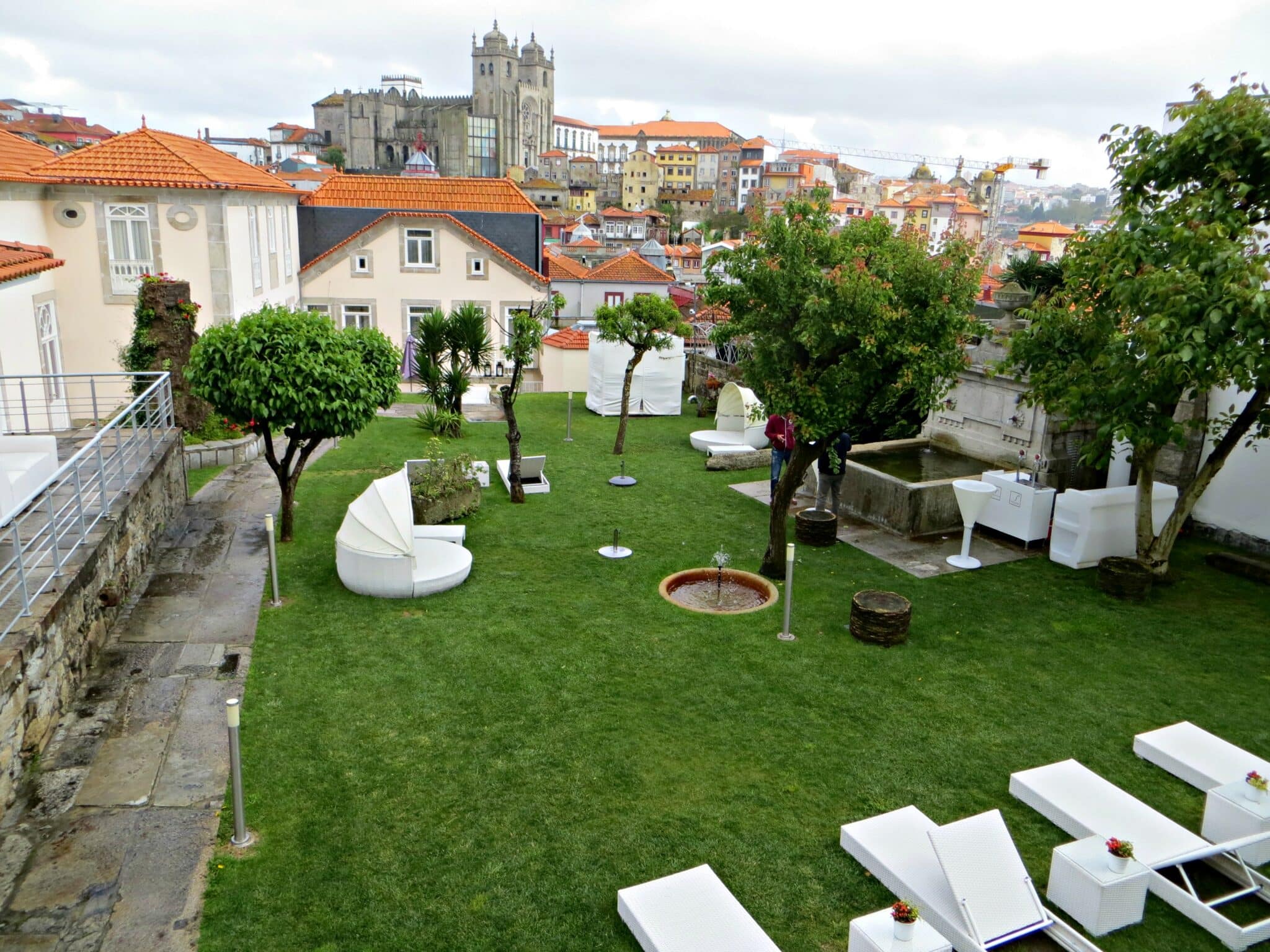
The Portuguese word for casual is pronounced caz-oo-wahl. That’s half of what you’ll need to know about Porto.
Portugal’s hundreds of miles of Atlantic Ocean coastline and ample domain for organic agriculture ensure that no visitor leaves unfazed by its food and wine. That is why, upon arrival in Porto, I beelined for DOP Restaurante (“Tasting and Daring in Porto”). Situated on the ground floor of the Palace of Arts, an original 14th-century building run by a youth foundation, the restaurant is a testament to the fact that creativity isn’t a dying art. Porto’s discerning diners flock here for chef Rui Paula’s signature cuisine—just say duck—based on the traditional Portuguese flavors recreated with universal flair. The handsome bi-level space also comes complete with a separate, open pastry kitchen.
Unexpectedly, a highlight of exploring the heart of the Old Town afoot was a visit to the Flores Village Hotel & Spa. The hotel’s façade and lobby reveal little about this gem, whose upper floors sprawl into gardens, other buildings with varying timelines, and hidden porches that share amazing skyline views. The fusion of these 18th-century historic structures mixes contemporary and antique décor, adding a spa center with a sauna and charming, yet subterranean, indoor pool.
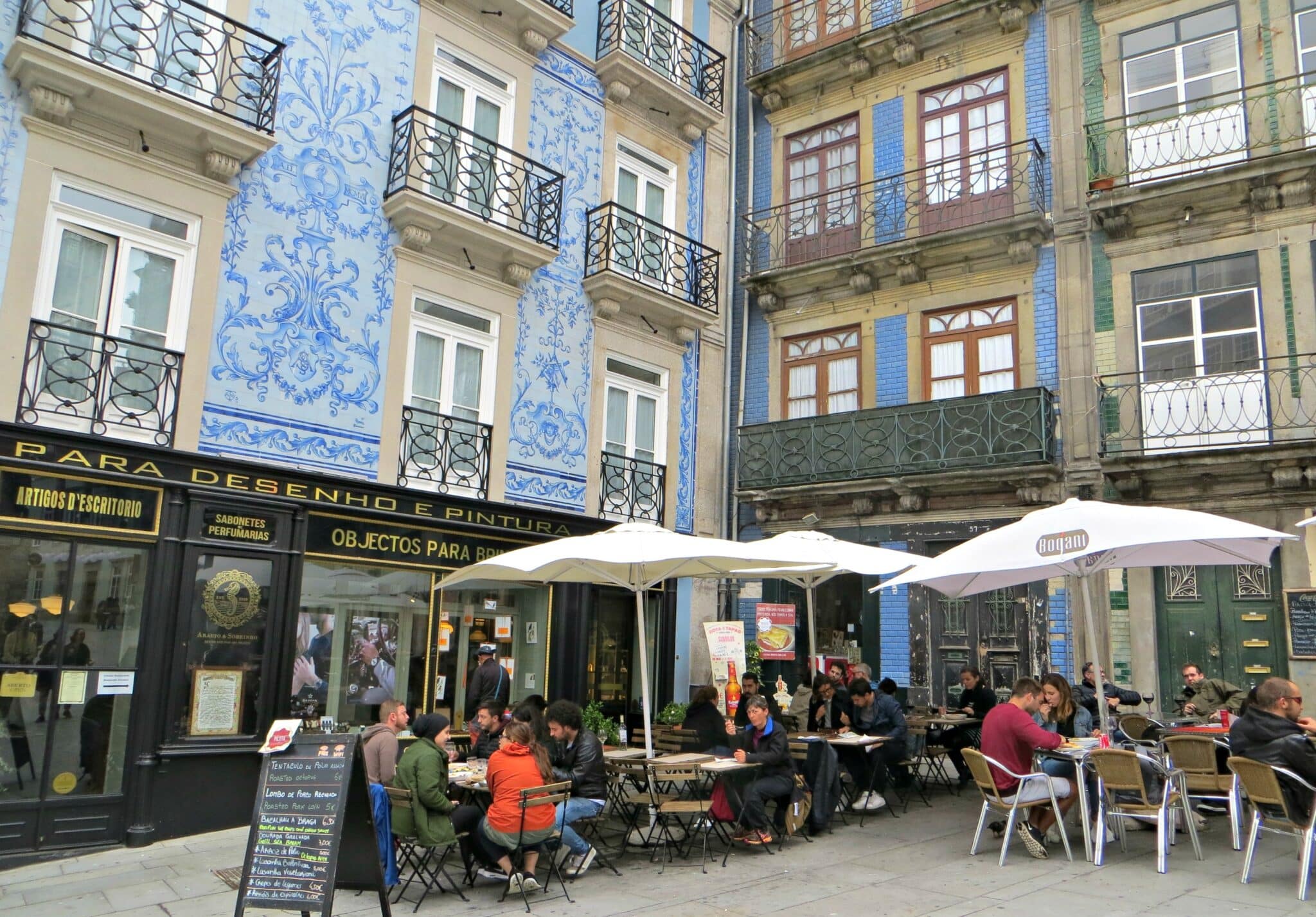
Strolling Porto’s olden, narrow streets reveals unofficial landmarks, including bookshops, grocery stores, indoor-outdoor cafés where people converse sans gadgets, and vibrant courtyard-like squares. All roads and pedestrian thoroughfares lead to São Bento Railway Station. Immediately inducted into the train hall of fame when it opened in 1916, the city-center train hub is celebrated for its foyer’s larger-than-life tile panels depicting Portugal’s landscapes and historical scenes. The 20,000 daydream-provoking tiles let me momentarily forget about dismal Penn Station.
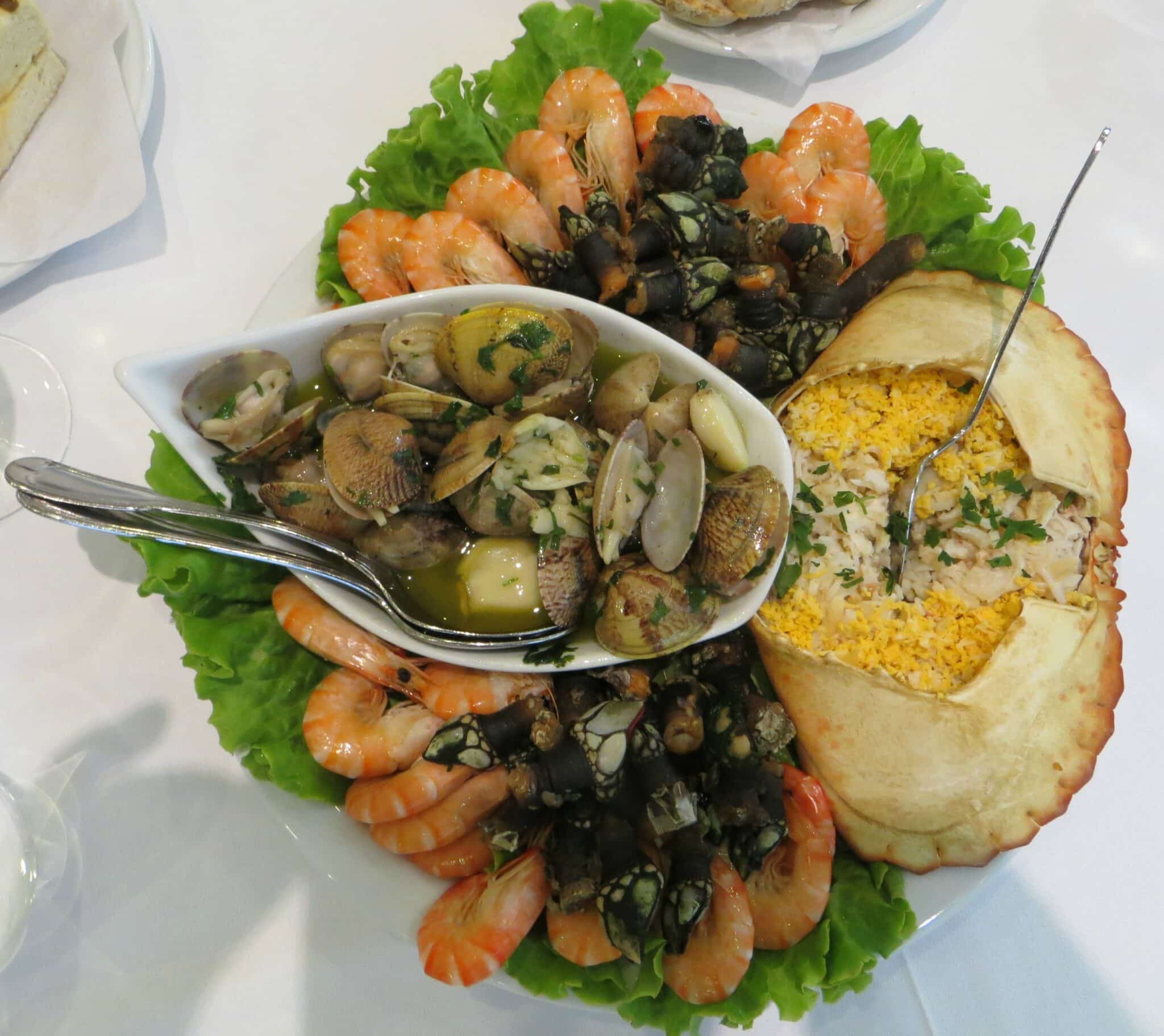
North of Porto and closer to the ocean than the riverside Old Town is Os Lusíadas Restaurante. Thanks to its stones-throw proximity to one of Portugal’s prime fishing ports, seafood practically jumps from the ocean onto your plate. An open-air, on-ice showcase of the day’s catch is always in view of this roomy white-tableclothed seafood benchmark. “Os Lusíadas” is an epic 16th-century poem by Portugal’s revered national poet Luís de Camões that illuminates explorer Vasco da Gama’s discovery of the sea route to India. Equally important, the mixed seafood appetizer includes barnacles (don’t knock it till’ya try it), clams, shrimp, and a sumptuous take on crab dip. The showy table-side flaming sea-bass presentation reminded me of how some out-of-work New York actors make a living, but these elder career waiters are strictly fishy business.
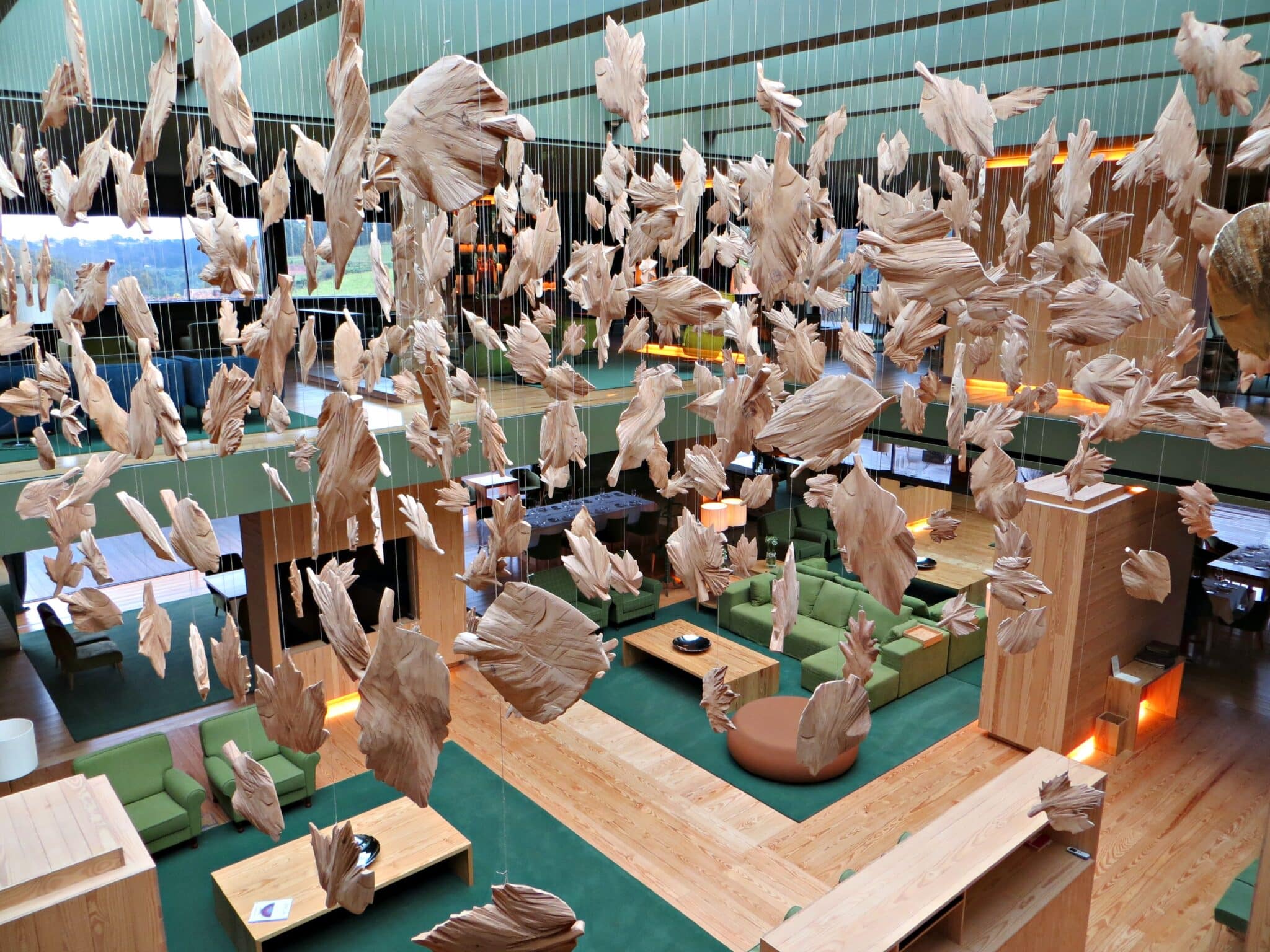
Nearby, but still a world away, is the Monverde Wine Experience Hotel. With an inland, countryside setting, this one-time vegetable farm has operated as a hillside vineyard since 1999. This refuge for the soul and for the senses allows guest to savor wines from every nook and cranny of the various wine-producing regions of Portugal. Nearby, the city of Amarante is a taste of small-town Northern Portugal on the River Tâmega, the longest tributary of the River Douro.
Back in charming Porto, the Casa da Música was created to memorialize 2001, the year Porto was the European Capital of Culture. Serving as a museum and concert hall, the building is dedicated entirely to music and nicely merges design and acoustic function. Not bad for the site that was once Porto’s central tram garage. Another landmark well worth suffering in group tour mode is Porto’s Chamber of Commerce, which evolved from being a stock exchange to a popular tourist attraction. Its multi-level Palácio da Bolsa is a towering architectural delight with spaces including the Hall of Nations and its stunning Arab Room.
Note: San Sebastián (Spain) and Wrocław (Poland) share designation as European Capital of Culture in 2016.
Most visitors, however, come for the port cellars, which get all the buzz here. Especially appealing is an inverted port cellar where rooftop offerings include delicious port cocktails. The Douro River-side Porto Cruz Space is a project celebrating the culture of port wine by fusing modernity with tradition. The combined information, exhibition and leisure space building offers a revealing port wine experience, and adds fashion, art, and gastronomy to the mix.

Oh no, more truffle butter? Old Town’s popular, caz-oo-wahly (casually) set and award-wining restaurant Cantinho do Avillez planted a banana-sized octopus entrée in front of me and my world changed. This may not sound appetizing, but this delicious creature had a firm banana consistency, resembled white lobster, and was accompanied by light green, basil-infused mashed potatoes. The tuna ceviche was also fantastic. This friendly, down-home, and welcoming spot was a great sendoff, but, unbeknown to me, I wasn’t done yet.
The Yeatman Hotel may be pricey, but it’s worth a visit. The 83-room hotel, set on a landscaped hillside, is the largest seller of port wines in the world. Seventy-eight of the rooms, each with a private balcony, are sponsored by individual wine companies, which contribute to the decor. This luxury wine hotel’s halls double as a museum. The Yeatmans, a trading family since 1692, have contributed to the hotel’s collection of art and archeological remains, which includes a wineglass sampling anthology dating to 800 BC. The hotel’s 30,000 bottle-strong wine cellar stock has 1,300 different types of wine, which are enjoyed by a range of guests, from those on high-end bike tours to royalty. At least pause for a drink at Dick’s Bar.
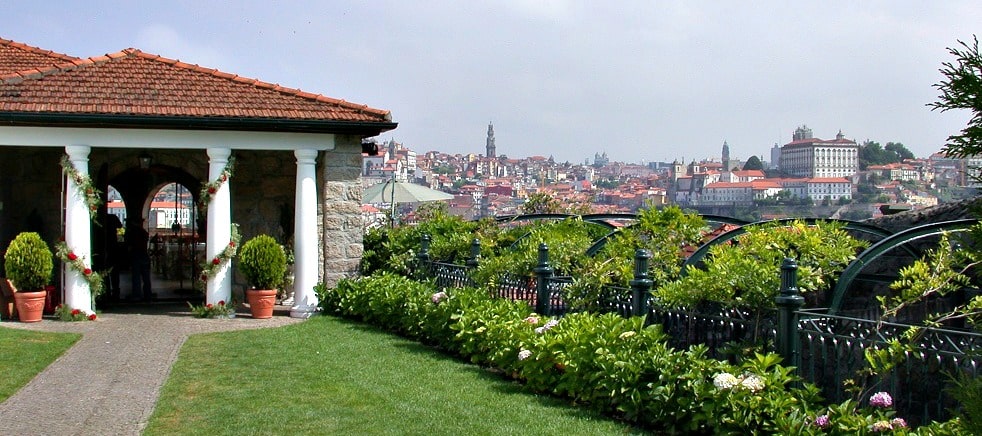
Nextdoor, the must-do granddaddy of tourist attractions here is Taylor’s Port Wine Cellars. Founded in 1692 by an English trader, it has been family-owned and managed ever since. It’s the dwelling to finally find out what tawny really means. Barão Fladgate Restaurant, an expert in all things port wine, is located in one of Taylor’s repurposed cellar rooms with a panoramic view of Porto’s historical center. This is the place to pair a kaleidoscope of vintage ports with Portugal’s greatest hits of Portuguese cuisine.
And, as the dollar continues gaining ground, the World Heritage City of Porto is now even more a bargain.
Where to stay, for cheap
Wipe your memory clean of what American Holiday Inn’s conjure—and consider the affordable Holiday Inn Gaia, a four-star property located across the river from Old Town in Vila Nova de Gaia, nearby the famous port wine cellars and a metro station.
For more on travel to Porto, visit visitportoandnorth.travel. All credited to Bruce Northam.

Thanks for the great info! Looking forward to more updates on this.
That’s a very nice post on attractions of Porto. Surely, i’ll make-out time to explore it with family.